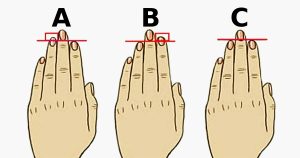Seatbelts are designed to keep us safe, but only if we wear them properly. While they might not always be comfortable or convenient, they make up for it by saving our lives. Children, in particular, frequently wear their seatbelts incorrectly and there have been so many injuries as a result – both from those old enough to sit on their own and those not in the right car or booster seat – that medical professionals have coined the term “seat belt syndrome.”
Seatbelts are designed for two things – to redistribute the force caused by a collision away from vital organs and into the pelvic area and to keep you from getting thrown from your car if you hit something or roll over. Most seat belts are now lap and shoulder belts, but little bodies often find the shoulder portion uncomfortable and end up putting it behind them to keep it from rubbing their necks. But that’s a mistake.
If you don’t think this sounds like a big deal, take the example of a 6-year-old girl from Virginia who was nearly cut in half by her seatbelt with her father hit a tree. Up until that gruesome moment, little Samantha had been enjoying a day out with her father. But when they got into an accident, her mother got that fateful phone call asking her to rush to the hospital. Little did she know just how dramatic her daughter’s injuries were.
Despite being 6, Samantha should have been in a booster seat to take full advantage of her seatbelt. Because she was not, the seatbelt did not sit in the right place on her lap and she also moved the shoulder strap.
Charles Bagwell, her doctor, said:
“Where you could see the stripe of the seat belt in an enormous bruise across her abdomen, as well as the fact that the edge, the far edge of the belt, had actually cut through her abdominal wall, and she had protruding intestines from that. She was just about cut in two. Much of which, quite frankly, couldn’t be repaired. The injury was too severe.”
Doctors were forced to use a temporary “binder” material to hold Samantha’s body together. Samantha’s mom, Shelly, feels terrible about the accident since her daughter should have still been in a booster seat but didn’t fit into it quite as comfortably anymore.
“A lot of people seem to think that when the children don’t fit so easily in the booster, that it’s okay to take them out of the booster. That’s not the case,” Shelly warned.
She revealed that Samantha did precisely what most kids do with their shoulder strap:
“Samantha also moved the shoulder belt behind her. So now the lap belt was carrying twice the force, and because she’s not tall enough without a booster, the lap belt went across her stomach instead of her hips. Doctors call the injury this caused ‘the seat belt syndrome.’”
Martin admits that the injuries were completely avoidable and that her daughter will not only suffer physically for the rest of her life but also struggles with PTSD as a result of the horrific accident. While children may complain about safety requirements in cars and it’s much easier not to have to strap them into a booster seat properly, Martin is now warning all parents that the inconvenience is well worth it.






